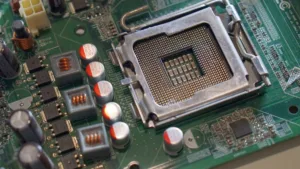Welcome to our comprehensive guide on myopia, commonly known as nearsightedness. In this article, we will delve into the various aspects of myopia, its causes, symptoms, and available treatments. Myopia is a prevalent vision condition that affects a significant portion of the population, and understanding its intricacies is crucial for maintaining healthy eyesight.
What is Myopia?
Myopia, or nearsightedness, is a refractive error that hinders a person’s ability to see distant objects clearly. Individuals with myopia typically experience clear vision up close, but objects in the distance appear blurry. This condition occurs when the eyeball is slightly elongated, causing light to focus in front of the retina instead of directly on it.
Causes of myopia
The development of myopia is influenced by both genetic and environmental factors. If parents have myopia, their children are at a higher risk of developing the condition. Additionally, activities that involve prolonged close-up tasks, such as reading or using digital devices, can contribute to the onset of myopia, especially in younger individuals.
Common symptoms
Myopia can manifest with various symptoms, including:
- Blurred vision when looking at distant objects
- Squinting to see clearly
- Eye strain and fatigue
- Headaches due to visual discomfort
Diagnosing myopia
Regular eye examinations are essential for diagnosing myopia. An eye doctor will perform a comprehensive eye test, including a visual acuity test and a refraction assessment, to determine the presence and severity of myopia. Early detection is crucial to initiate appropriate treatment and prevent further progression.
Treatment options
Myopia can be managed through various treatment options:
- Eyeglasses: Prescription eyeglasses with concave lenses are commonly prescribed to correct myopia. They help in focusing light directly on the retina.
- Contact Lenses: Soft or rigid gas-permeable contact lenses can also effectively correct myopia.
- Orthokeratology: This involves wearing special rigid contact lenses overnight to reshape the cornea temporarily and provide clear vision during the day.
- Refractive Surgery: Procedures like LASIK and PRK can permanently reshape the cornea to correct myopia.
Myopia levis and co je myopia
While discussing myopia, you might come across terms like „myopia levis“ and „co je myopia.“ These phrases refer to different aspects of myopia. „Myopia levis“ can be translated as „mild myopia,“ indicating a lower degree of nearsightedness. On the other hand, „co je myopia“ translates to „what is myopia“ and is a common query among individuals seeking to understand the condition.
Frequently Asked Questions (FAQs)
Q: Can myopia develop later in life?
A: Yes, although myopia often develops during childhood and adolescence, it can also manifest in adulthood due to various factors.
Q: Is myopia preventable?
A: While genetics play a significant role, managing screen time, spending time outdoors, and taking regular breaks from close-up tasks can help reduce the risk of myopia progression.
Q: Can myopia lead to other eye problems?
A: In some cases, severe myopia can increase the risk of eye conditions such as retinal detachment, glaucoma, and macular degeneration. Regular eye exams are essential for early detection.
Q: Can I undergo refractive surgery if I have myopia?
A: Refractive surgery, like LASIK or PRK, can be an option for individuals with myopia, but candidacy depends on various factors. Consult an eye doctor to determine the most suitable treatment for your specific case.
In conclusion, myopia is a common vision condition that affects how individuals perceive distant objects. With proper diagnosis and appropriate treatment, individuals with myopia can enjoy clear vision and improved quality of life.
Viz také:






